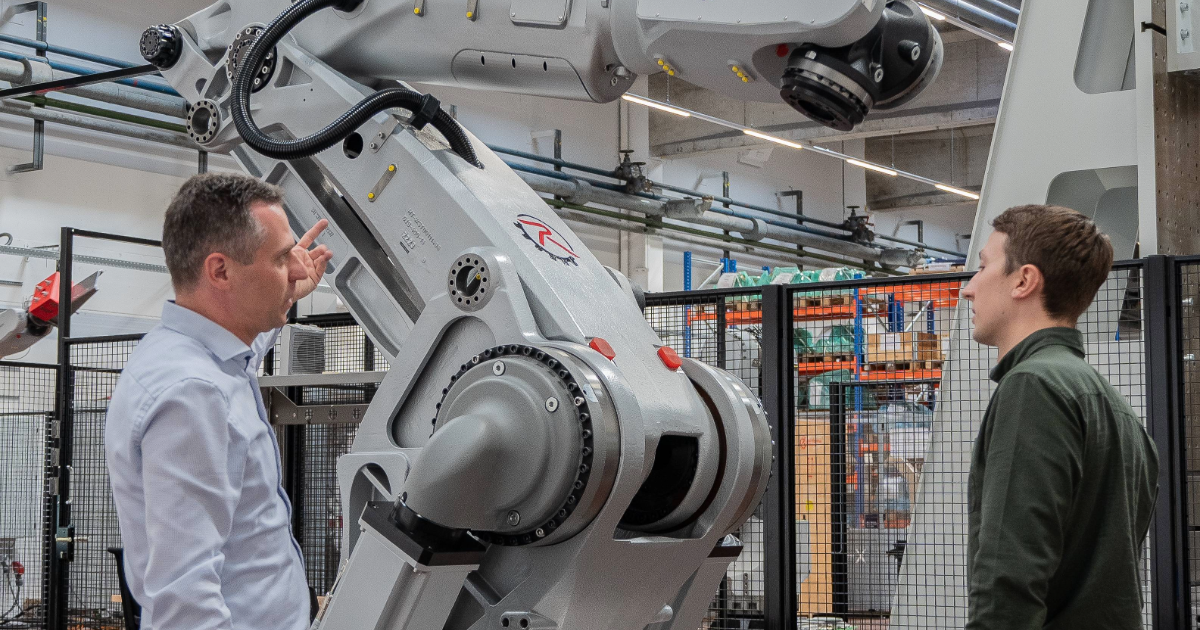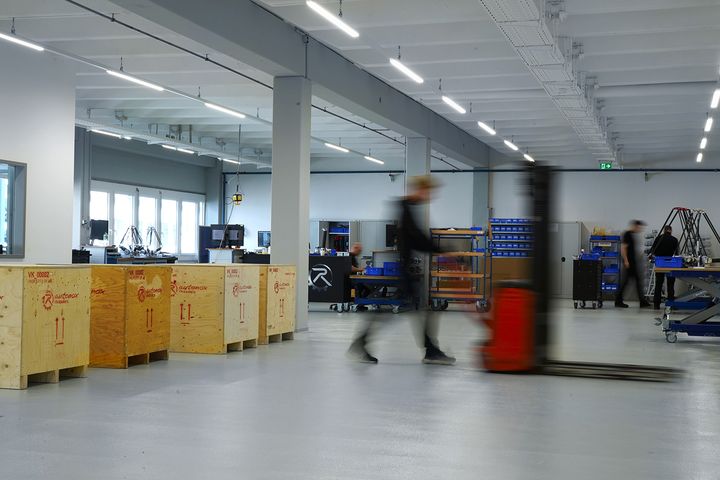Robotics solution meets independent mechanics
- References / Success Stories
- Robotics
- 4.9.2025
- Reading Time: {{readingTime}} min

Contents
Our paths crossed with those of autonox Robotics crossed in 2016. At that time, the German company, founded in 2002 and based in Willstätt, Baden-Württemberg, was increasingly faced with the challenge of testing its control-independent robot mechanics with suitable controllers. Due to the rapidly growing portfolio and the associated endurance runs, the available controllers quickly became in short supply.
Operations manager Ratajczak recalls: "We reached our limits in two respects: on the one hand, we could no longer control the motors of new developments for higher loads with the existing controllers and the small drive controllers installed in them, and on the other hand, due to the rapid growth in the portfolio, additional controllers were needed to cover all endurance runs. So we needed another control cabinet that could cover as many kinematic models and motor sizes as possible that were in our portfolio at that time. In close consultation with KEBA, we were able to define a suitable control cabinet – a ‘jack of all trades’, as we still call the control unit today." This included our safe KeDrive D3 robot control and KeDrive D3 drive technology
Our role in portfolio hedging
Significant progress was already achieved in the first joint project phase. Our collaboration helped autonox to operate a wide range of different robot types in practical application scenarios at an early stage. This helped to secure the portfolio in terms of performance and quality.
The new control cabinet supported both 2-axis and 6-axis mechanisms and different motor sizes, thus providing the ideal basis for systematically testing mechanisms. This flexible design of the control cabinet enabled realistic tests under different conditions and requirements.
Ratajczak says: “Even as a manufacturer of pure robot mechanics, control cabinets and associated partnerships such as this one are essential for validating and confirming the performance and reliability of our developments.”
Fast real-world implementation thanks to our simulation tool
A joint customer project was implemented within two months: autonox and KEBA worked on a robot cell with the first four-axis delta robot with a payload of 3 kilograms.
We at KEBA contributed open and scalable robotics control and servo motors in a control cabinet size that was unprecedentedly small while offering maximum performance. The control cabinet was even up to 50 percent smaller than solutions with comparable drive technology performance, thanks to the compact KeDrive D3 system.
Our preparations for the actual implementation were initially based on simulations in KeStudio. The sensational result was achieved after only two days of optimization work on the customer's test machine: The DELTA mechanism with double gripper and KEBA control achieved 170 products per minute quickly and smoothly. Comparable products on the market usually managed 130 products per minute. Incidentally, the indexing belt was used, which means: In KEBA controls, an indexing belt is treated like a normal servo axis, but is given a clock-synchronous motion logic. Thanks to integrated tracking functions, the robot works seamlessly and the line achieves high quantities with precise positioning.
Open robot systems drive industrial robotics forward
From the outset, autonox was convinced that the further development of industrial robotics would be driven primarily by open robot systems. Ratajczak explains: “Only open systems enable flexible integration and the continuous further development of individual components. They create the basis for exchange and cooperation between different developers and technologies.”
Closed systems, on the other hand, can limit innovation because they make adjustments and enhancements difficult. “Openness and modularity are therefore key to enabling robotics to reach its full potential,” says Ratajczak.
Another significant advantage of open systems is the customer benefit: They make it possible to rely on specialized partners who contribute their respective expertise in a targeted manner. KEBA, for example, focuses on the development of high-performance control technology, while autonox plays to its strengths in the design and manufacture of robot mechanics. This clear division of roles creates trust and offers customers a high degree of investment security and technological advancement at a high level.
Long-term test with KeMotion for innovations
The collaboration between autonox and us continued steadily after the successful first project phase. Further joint customer projects and research activities followed, with the aim of further optimizing the performance and user-friendliness of the systems.
The combination of the different product variants of the kinematics from autonox and our powerful and flexible controls, drive systems, and control panels proved to be technically robust and reliable. It enables intuitive operation while meeting high requirements for system stability—an essential aspect for industrial use.
At the same time, autonox is continuously expanding its range of kinematics to meet changing customer requirements and open up new application possibilities.
Sophisticated robotics package for customers
The joint customers of autonox and us (primarily OEMs in the field of pick-and-place applications in the food packaging, pharmaceutical, and consumer goods industries) receive a reliable, mature, and yet highly flexible robotics package that can be adapted to the respective application in the customer's machine. The simultaneous openness of the mechanics and control solutions ensures easy integration of the respective customer technology – this makes the customer solutions unique in their function and enables unique selling points for the respective OEM.
Closed systems, on the other hand, can limit innovation because they make adjustments and upgrades difficult. “Openness and modularity are therefore key to enabling robotics to reach its full potential.”
Mutual respect and a supportive environment
Openness, partnership, and agility characterize the collaboration between the autonox and KEBA teams. Thanks to transparent processes, both sides can respond quickly to new requirements, which builds trust and ensures the success of joint projects. Ratajczak particularly appreciates the KEBA culture: “The team is characterized by a warm and supportive atmosphere. Mutual respect and cooperation are very important. Successes are celebrated together and in challenging times, everyone supports each other. Requirements and challenges are responded to flexibly.”



















